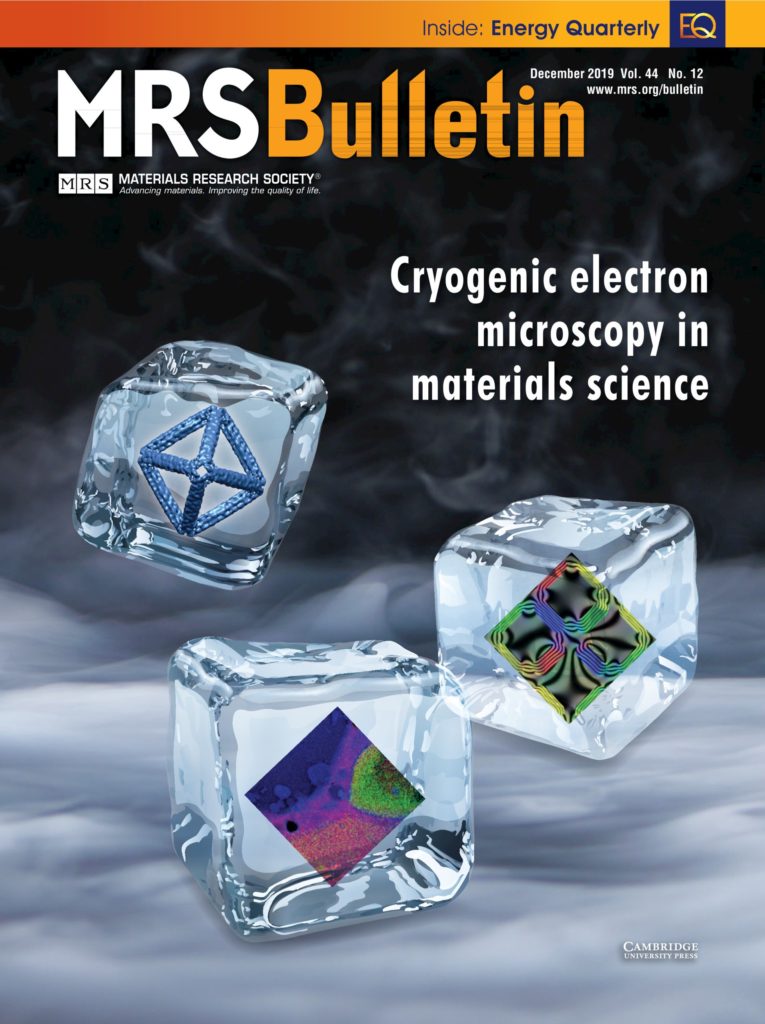By Laurie Chong

A recent special issue of the MRS Bulletin focused on cryo-electron microscopy for materials science, covering a range of topics from the field’s history, current techniques, and future directions. Foundry and LBL staff, as thought leaders in the field of electron microscopy (EM), were invited to contribute an article looking at new opportunities in quantum information science that could become possible if the full capabilities of EM were to become usable at extremely low temperatures.
Andrew Minor, NCEM Facility Director at the Molecular Foundry and Professor of Materials Science and Engineering at UC Berkeley, and Foundry users Peter Denes, Senior Scientist at the Advanced Light Source, and David Muller, Professor of Engineering at Cornell University, previously led a workshop at Berkeley Lab specifically looking at the scientific opportunities that would arise with ultrastable atomic resolution at extremely low temperatures. Participants hailed from a range of institutions: Columbia, Cornell, Forschungszentrum Jülich, Arizona State University, Oak Ridge National Laboratory, Stanford University, University of Paris, UC Berkeley, Brookhaven National Laboratory, Argonne National Laboratory, Yale University and UCLA. The discussion yielded three primary areas of opportunity: electron-lattice coupling, single photon quantum emitters/optical coupling/quantum information science (QIS), and in-situ studies.
In their article based on the scientific directions presented and discussed in this workshop, the researchers focused on the potential impacts cryo-EM could have on Quantum Science. One of the main issues with using EM for low temperature studies is the fact that instrument limitations lead to resolution tradeoffs even on the most stable electron microscope platforms.
For example, one weakness of modern electron microscopes used in materials science is the side-entry sample-rod design, where the sample is thermally coupled to a cryogenic coolant at the end of the sample rod, leading to short hold times, thermal drift, and coupling to external vibrations. Atomic resolution electron microscopy at cryogenic temperatures without the current design limitations in spatial or spectral resolution would enable dramatic advances in understanding structure–property relationships in quantum science as well as in other areas of materials science. However, reaching this goal is not limited by fundamental physics, but rather by engineering and instrumentation challenges, which will require new investments in cryogenic electron microscope designs optimized for low-temperature materials science. Foundry staff and users are exploring ideas with which to meet these challenges.

